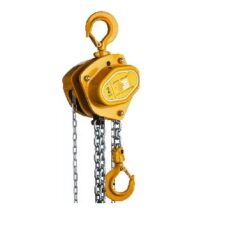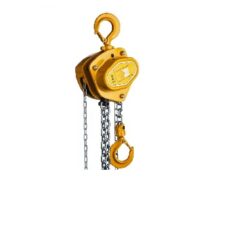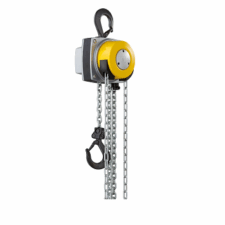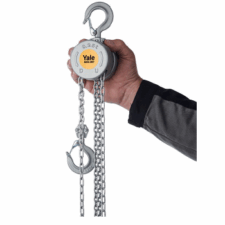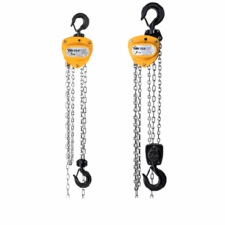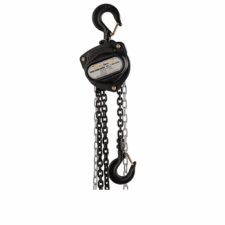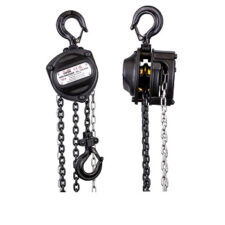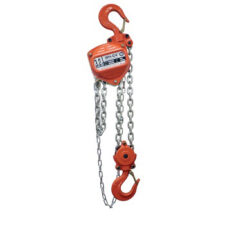Buy a Manual Hoist Today
Premium Manual Hoist Equipment Without the Premium Price Tag
Manual hoists are used for lifting heavy loads without the need for a power supply, thus giving it a big advantage over powered lifting hoists.
A manual chain hoist can be used pretty much anywhere as long as it can be attached to a suitable suspension point.
Thanks to the less technical design when comparing to an electric hoist for example, maintenance is low key. The standard LOLER regulations apply for yearly thorough inspections. This is to ensure the manual lifting hoist remains safe to use.
Another benefit to using these hoists is an increase in productivity. This is due to loads being able to be lifted at a quicker pace than if lifted by a person or persons if this is even possible!
From a health and safety point of view the manual hoist minimises injuries resulting from lifting heavy loads. As a result less time off for recovery will be required. All beneficial to any business.
Manual Hoist Uses
The manual hoists we are talking about here are also sometimes referred to as a chain block, block and tackle or a manual chain hoist. They come in a variety of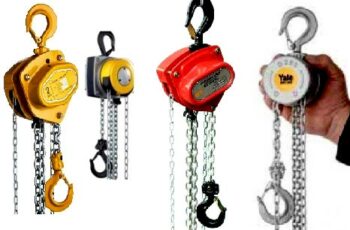 models from different manufacturers but generally work the same. They are used incessantly across many types of industries, large and small as well as the DIY-er! A few examples include; car garages, warehouses, factories, manufacturing plants, utility industries, construction, engineering and many more.
For industrial use our manual hoists are typically suspended from some type of crane. This could be a mobile gantry, A frame lifting gantry, Jib crane or perhaps a smaller overhead runway crane.
It is possible, however to use these chain blocks in other scenarios as long as the anchoring point can bear the weight applied by the hoist and load. It must also be capable of withstanding the forces implied during the lifting operation.
models from different manufacturers but generally work the same. They are used incessantly across many types of industries, large and small as well as the DIY-er! A few examples include; car garages, warehouses, factories, manufacturing plants, utility industries, construction, engineering and many more.
For industrial use our manual hoists are typically suspended from some type of crane. This could be a mobile gantry, A frame lifting gantry, Jib crane or perhaps a smaller overhead runway crane.
It is possible, however to use these chain blocks in other scenarios as long as the anchoring point can bear the weight applied by the hoist and load. It must also be capable of withstanding the forces implied during the lifting operation.
Benefits of a Manual Hoist - Things To Consider
When choosing a manual hoist you should always ensure the stated safe working load easily meets your load lifting requirements. Another consideration is the height of lift you will need. Most manual hoists come with enough chain to enable a 3 metre lift. This is not always enough so at the Lifting Gear Store we offer a choice of 6 metres as well. This can save time and money if a 6 metre is the length you need because with a 3 metre (you pay for initially) would need to be re-chained with the longer length, this could be chargeable to do correctly. Then you will have 3 metres of chain left over, which you may be able to put to use elsewhere if not it could go to waste. Safety features are a must, especially when it comes to braking. Overload protection is another thing to think about. All our hoists comply with the necessary regulations, come with full certification, have been tested and thus safe to use. Take a look at the details for our range of manual chain blocks which includes the Delta manual chain hoist which comes with safe working loads up to 5000kg and has some good safety features all for a great price. Yale, Viper and Hacketts are some other brands of chain hoists we can supply Call 01384 76961 if you need any help or advice.Manual Hoist / Chain Block FAQ'S
What is a manual hoist?
A manual hoist or chain block as is typically called, is a mechanical lifting device that operates through human power rather than electrical or pneumatic systems. Built to endure tough conditions, these tools use a hand-chain to raise, lower, and move heavy items steadily and safely. The principle behind a manual hoist is the mechanical advantage; the operator pulls or pushes with much less force than the weight being moved, making the manoeuvring easier. Manual chain hoist/block has a continuous length of hand chain that, when pulled turns gears and raises the load through a separate load chain.
What is the difference between a manual hoist and an electric hoist?
At the heart, the only real difference is where the power comes from and how that changes the dynamics of your work. Because lifting tasks can vary, each option has strengths that shine in its own corner. Manual hoists rely entirely on human strength and power, using hand chains or levers to lift loads step by step. Because they need no power outlet, they are great outdoors, in remote sites, or areas where electricity could spark trouble. Electric hoists, uses electric motors to power the lifting mechanism, enabling faster operation and reduced physical effort from operators. These systems work well in applications requiring frequent lifting cycles or handling of particularly heavy loads over extended periods. Electric hoists typically offer greater speed and can be integrated with remote controls and automated systems for enhanced productivity.
How often should a manual hoist be serviced?
The servicing frequency for manual hoists depends on several critical factors. This includes - usage intensity, operating environment, and regulatory requirements. For standard industrial applications, manual hoists should undergo thorough inspection and servicing at least annually by qualified personnel. However, equipment subjected to heavy daily use, harsh environmental conditions, or critical lifting operations may require more frequent attention, potentially every six months or quarterly.
Is a manual hoist is right for me?
To figure out whether a manual hoist fits your job, you should look at a few practical details about how and where you plan to use it. First, consider the load you’ll be lifting: its weight, size, shape, how often you lift it, and how precisely you need to set it down. If the load is moderate, and comes up only occasionally, a manual hoist usually does the trick. But for heavy, non-stop lifting, or when time is tight, an electric model will probably serve you better. Next, think about the environment. Manual hoists shine outdoors, in spots where power is scarce, or in areas that can’t accept electrical gear for safety reasons. Finally, assess the operator’s side of the equation: how strong a person needs to be, whether they have been trained, and what safety safeguards are in place. Because a manual hoist calls for physical effort.




